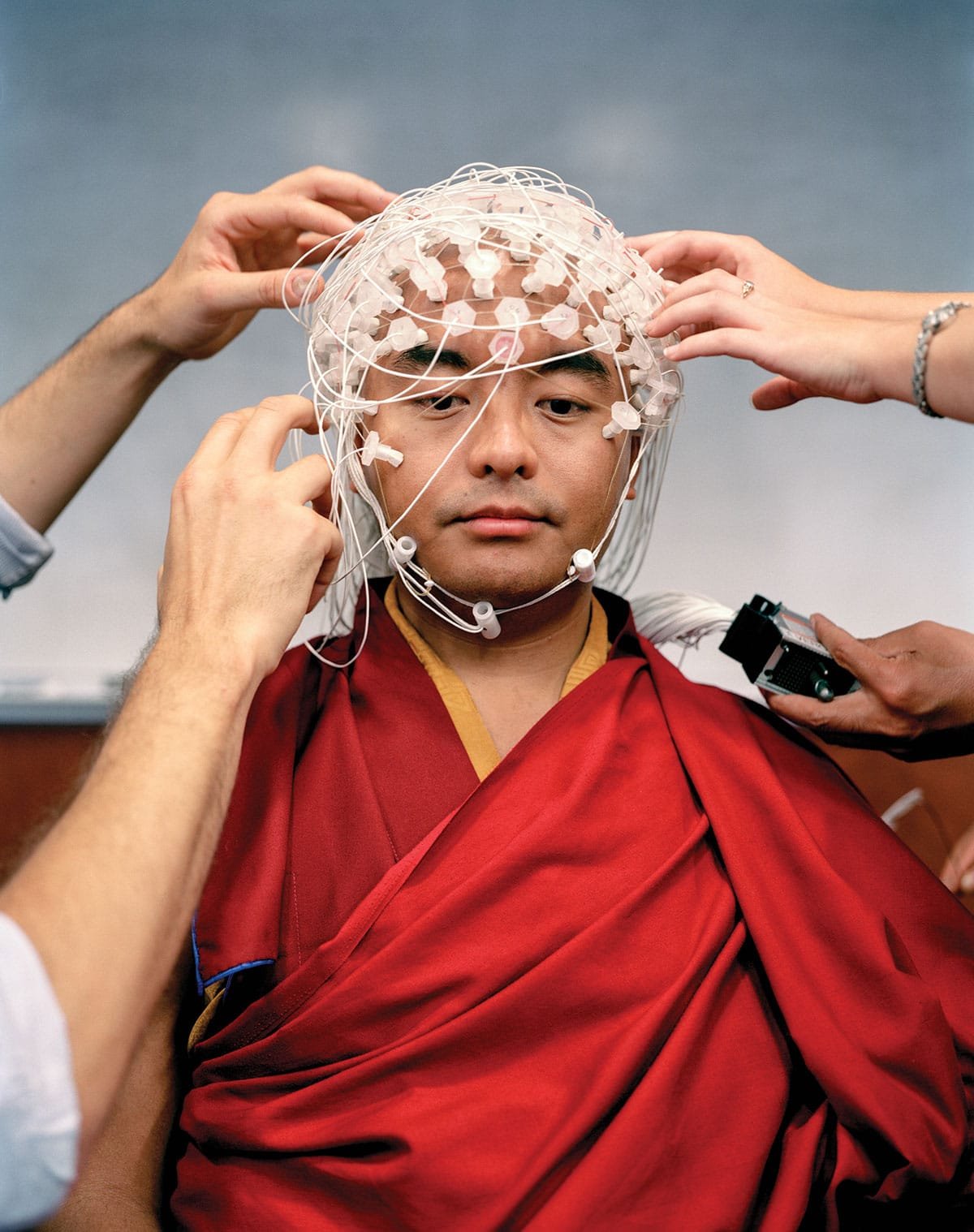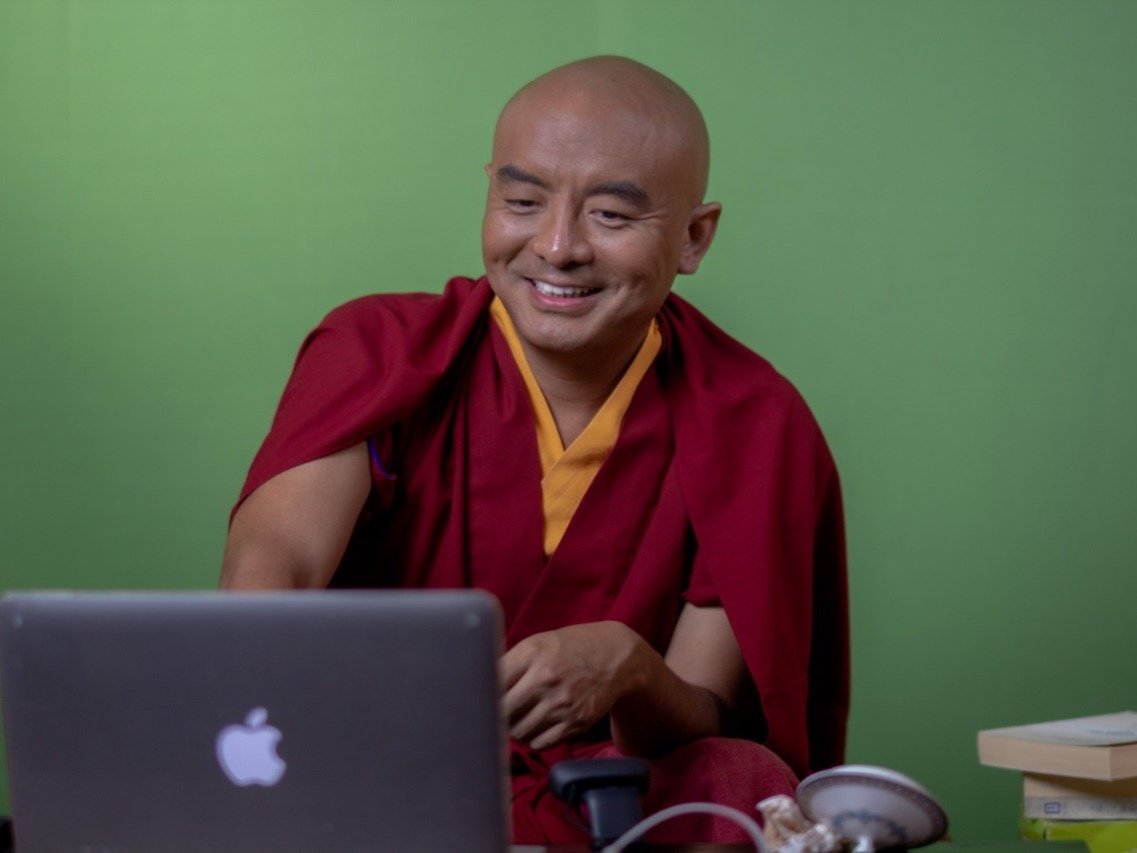
New Meditators
Tergar Meditation Training
Tergar Meditation Training provides an in depth course of training in both awareness and insight meditation. The Tergar journey begins with the Joy of Living, a series of three seminars in which Yongey Mingyur Rinpoche presents practical advice on how we can use meditation to calm our minds, open our hearts, and develop insight into the true nature of reality. Emphasizing universal principles like inner peace, compassion, and wisdom, the Joy of Living teaches an approach to meditation that can be practiced by people of all faiths and belief systems.
Tergar Australia offers Joy of Living courses throughout the year both online and in-person, however it can also be completed online anytime. We encourage anyone regardless of experience level to begin here as a supplement to our weekly practice meetings. Click here for more details.
The Path of Liberation builds on the foundational teachings of the Joy of Living, presenting a series of meditative practices designed to strip away the causes of suffering and uncover the radiant awareness that underlies all experience. This course of practice and study, based on the ancient Buddhist teachings of Tibet, addresses the fundamental confusion that lies at the root of all suffering, enabling us to uproot the distorted ideas and destructive behaviors that keep us trapped in a cycle of anxiety and dissatisfaction. This course of meditation training is recommended for those who feel inspired to make Buddhism their primary spiritual path.
Tergar’s unique approach allows for the integration of theory and meditation. The most important principles of the spiritual path are presented in an experiential manner so that they can be directly applied in our day to day lives.
What is Meditation?
What is meditation and how do we define meditation? Meditation is the art of cultivating awareness and insight. It can be used as a practical tool to undo destructive emotional patterns, to develop positive qualities like wisdom and compassion, and to access the mind’s fundamental nature of pure awareness.
Awareness: The Essence of Meditation
As Mingyur Rinpoche often says, awareness is the essence of meditation. What he means is that practicing meditation is a process of exploring the heart and mind, of fully experiencing the richness of awareness itself. This implies that meditation is not meant to eliminate the things we don’t like about ourselves, or even to become “better” people. Meditation helps us to see that we are already whole and complete. It is a practical tool that enables us to get in touch with our true nature.
The path of meditation unfolds in two stages: We begin by recognizing that the nature of awareness is fundamentally good and pure, and that it is the source of true and lasting happiness. Once we have directly experienced the basic goodness of awareness, the path of meditation then consists of nurturing this recognition and allowing the qualities of awareness to manifest fully.
The path of meditation can thus be summed up in these two aspects: recognizing our true nature and nurturing this recognition until it becomes a living experience throughout our lives.
The third option: Making Friends with Difficult Emotions
When we encounter challenging situations and painful emotions, we typically respond one of two ways: In the first case, we identify with our feeling and believe what it tells us. Mingyur Rinpoche calls this the “Yes sir!” response. In the second case, we resist the emotion and try to push it away, and perhaps even repress it to the point where it fades from our conscious experience. This is what Rinpoche calls the “Hey, get out!” response. Both of these responses keep us locked in a cycle of dissatisfaction and suffering.
Meditation gives us a third option, in which we use painful feelings as supports for awareness. This approach undermines the resistance we often feel toward difficult feelings. At first, it may feel like there is a bit of space between you and the emotion, or like you are learning to be with the emotion rather than become the emotion. This may not feel all that pleasant at the beginning, but eventually we can even learn to embrace and appreciate these feelings as natural expressions of awareness.

“The only difference between meditation and the ordinary, everyday process of thinking, feeling, and sensation is the application of the simple, bare awareness that occurs when you allow your mind to rest simply as it is—without chasing after thoughts or becoming distracted by feelings or sensations.”
—MINGYUR RINPOCHE
Why Meditate
Where can we find true happiness? In the modern world, we are surrounded by unparalleled levels of material wealth and comfort, yet our sophisticated exterior often masks feelings of dissatisfaction, anxiety, and depression. Ironically, it often seems the more ‘progress’ we see in the world around us, the less content we are with our lives. So what are the benefits of meditation and why should we meditate?
One of the primary benefits of meditation is that it shows us true happiness is found within. The feelings of contentment and wholeness we often seek outside ourselves are actually part of our basic nature. Unfortunately, we have become so habituated to looking outside of ourselves for happiness that we often do not know how to discover this ‘inner wealth’. Though we all have the potential to find a deep and lasting happiness that does not depend on external circumstances, simply hearing we already have what we need to be happy is not enough. We need practical methods to uncover our true nature, practices that will enable us to move beyond the cultural conditioning that perpetually tells us we are incomplete.
Another one of the primary benefits of meditation is that the practice of meditation awakens us to the joy of the present moment. By cultivating attention and awareness, even challenging situations, like chronic pain, destructive thought patterns, and difficult emotions, can be transformed into sources of inner peace and joy. This inner transformation does not require us to retreat from the world. On the contrary, daily life is filled with endless opportunities to use the practice of mindfulness to find the preciousness of every moment. Meditation is not meant to remove us from the world, but to open our hearts and minds to the beauty of what we already have.
For centuries, various forms of meditation have been taught and practised in virtually all of the world’s religions. While there are important differences between the techniques found in each tradition, they share the belief that true happiness cannot be found in the shifting conditions of the external world, but rather by turning inward and exploring the landscape of the heart and mind.
Scientific Evidence of the Benefits of Meditation
In recent years, meditation has also received a great deal of attention from the scientific community. Researchers from Harvard, MIT, the University of Wisconsin, and many other renowned institutions have explored the effects of meditation on everything from high blood pressure to peak states of consciousness. Their research has shown not only the profound effects that meditation can have on the brains of advanced meditators, but also how practicing meditation for only a few minutes a day can create a dramatic increase in the parts of the brain associated with happiness and wellbeing. Meditation has also been shown to boost the body’s immune system, to improve the brain’s capacity to concentrate for extended periods of time, and to be an effective treatment for many psychological disorders..
Where to begin?
Starting to meditate isn’t as difficult as you might think. Tergar Australia welcomes new meditators to our group. We hold a regular weekly online meditation and discussion practice on an each week which is free to attend and open to anyone. We always have a range of experience in that session, which is mostly peer-led, following the Tergar curriculum. Visit our events page to find out more.
We also send out a weekly newsletter with updates as to what is coming up. If you are interested to hear more you can sign up here.
Tergar has a rich offering of online courses, some live over a number of weeks with practice homework, and others which you can do in your own time.
You can start with the free Intro to Meditation Course on the Tergar Community website here.
When you are ready for more (or if you want to jump right in), you can start The Joy of Living program which can be done both live and in your own time. It’s a step-by-step approach that makes meditation incredibly clear and accessible.
Though rooted in the ancient Buddhist teachings of Tibet, the practices taught in the Joy of Living are not religious in nature. They deal with basic functions of the mind, such as mindful awareness and the movements toward happiness and away from suffering. In working with these qualities of mind, we gradually transform our relationship to present–moment experience, learning to approach every thought, feeling, and sensory experience with unconditional warmth and acceptance.
Joy of Living live courses are released periodically throughout the year, and at different times of the day to account for time zones across the world. We are fortunate to have two senior Tergar Guides living in Australia, Myoshin Kelly and Edwin Kelley, and so usually have options that suit Australian time zones. You will find upcoming courses on our Events page .
For more information about the Joy of Living and the at your own pace online course go here.
Frequently Asked Questions
-
Meditation can be practiced by anyone. The practice of meditation is a process of turning inward to learn about the workings of the mind and how thoughts and emotions shape perception. It does not require one to believe any particular religious doctrine, though many of the world's greatest sages and saints have used meditation as a way to deepen their understanding and experience of their own faith. Currently, meditation is taught and practiced in healthcare settings to relieve stress and cope with chronic pain; in the corporate world to develop authentic, value-based leadership; and in the educational system to help students concentrate and center themselves.
-
Meditation has many benefits. In a general sense, meditation allows us to access the mind's innate qualities of peace and serenity. Eventually, these experiences become a living reality and our happiness is no longer dependent on the fluctuating conditions of the world around us. Meditation can also be used to cultivate certain qualities, such as compassion or wisdom, and also to address specific problems, such as destructive emotional patterns, chronic illness, and challenging relationship issues. The point of meditation is not to escape such situations, but rather to see that everything we experience can be transformed into a source of joy through the practice of meditation.
-
There is no one approach to meditation that works for everyone. Indeed, the “best” approach is simply the one that works best for you. To learn more about the style of meditation practiced in the Tergar community, the easiest way to begin is to take Tergar’s free, self-guided Intro to Meditation course on the Tergar Learning Community (TLC). You can also read our Top Eleven Books for Beginning Meditators, Best Buddhist Books for the beginner, or visit The Tergar International TLC library which is full of recommended books, downloadable audio files, videos, and more.
Once you’re ready to dive in, you can take the Joy of Living Level I class online. Or look for a retreat, workshop, or meditation group near me in your area.
If you feel drawn to Tergar’s approach, then you're in the right place! If you have questions, feel free to contact a community leader or send us an email via our contact page. We’d be happy to tell you more about our approach to meditation and help you get started in practice.
-
The ultimate goal of meditation practice is to bring awareness to every moment of one's life, not just the time one spends in a formal meditation session. That said, setting aside time each day to cultivate awareness is an indispensable part of the process. Most people find that the more time they devote to meditation "on the cushion," the easier it is to bring awareness to their experiences "off the cushion."
-
When beginning a daily meditation practice, it is important to meditate in short, frequent sessions. Twenty minutes a day, practiced over one or two sessions, is a good general guideline for beginning meditators. It is important to note, however, that you can and should practice anytime, anywhere. Once you know the key points of meditation, you will be able to use any experience or activity as a way to practice sustaining meditative awareness.
-
Meditation is a state of heightened awareness. When you try to meditate, there will likely be periods where you are lost in thought, and other times when you are fully aware in the present moment, meaning that you are fully conscious of what you are doing at that time. Whether you are focusing on your breath, observing thoughts, or simply resting in awareness, the sign of meditation is that you know what you are doing. In other words, you are not only watching the breath, but also aware that you are watching the breath. Meditative awareness can be practiced at all times. You simply need to be aware of whatever you are doing in the present moment. If you are driving to work, for example, you can pay attention to the road and your surroundings, but also maintain a heightened sense of awareness that you are driving. You can even do this while engaged in conversation, watching television, or working in front of a computer.
-
Thinking is a natural function of the mind; there is no need to stop thoughts from occurring. When you are meditating and you realize that you have been lost in thought, simply return your awareness to the object of your meditation. There is nothing more to it than that. You may even take your thoughts as the object of meditation, or rest in open awareness, letting thoughts come and go without paying too much attention to them. The key point is that thoughts and distraction are a natural part of meditation. As you grow more and more familiar with meditative awareness, thoughts will bother you less and less. You may even find that thoughts actually help your meditation, insofar as they are one more experience that you can use to expand your awareness.
-
Meditation allows us to be more aware and present in whatever activity we are doing. This has a beneficial impact on virtually every aspect of day to day life. In relationships, meditation will help us develop unconditional love that springs from a place of deep peace and serenity. At work, meditation will enable us to be more focused, creative, and efficient, while at the same time being emotionally balanced. In terms of health, meditation has been shown to have a dramatic impact on the physical body, including lowering stress levels, increasing immune system functioning, and increasing the capacity to cope with illness and chronic pain.
The Joy of Living Online ›
Begin your meditation journey with Tergar here.
Upcoming Local Events ›
Join one of our weekly online or in-person meetings.
Schedule a Practice Interview ›
Schedule a practice interview with one of our experienced instructors.






